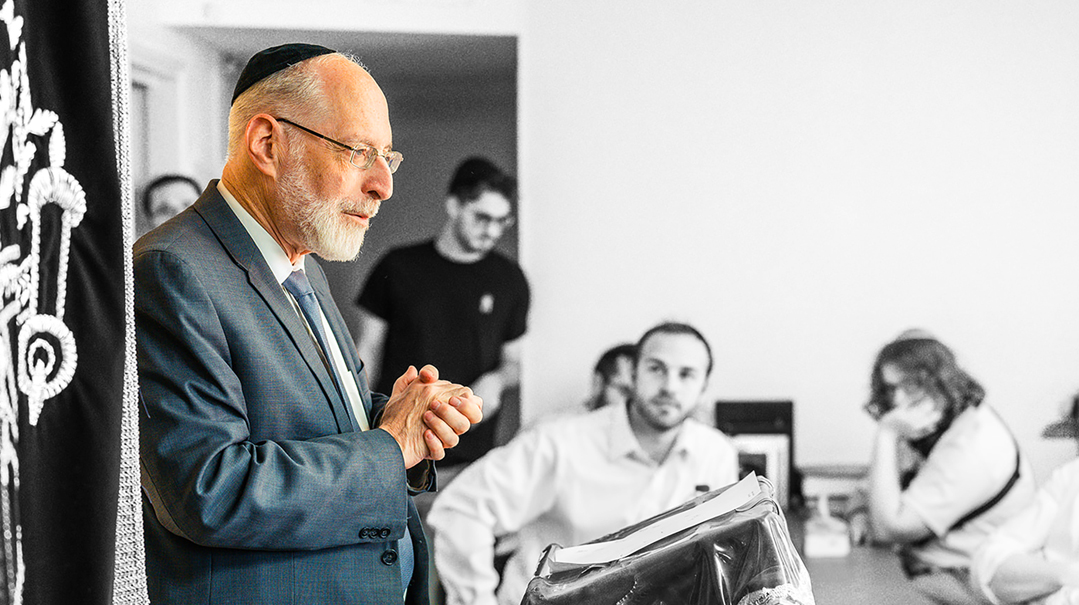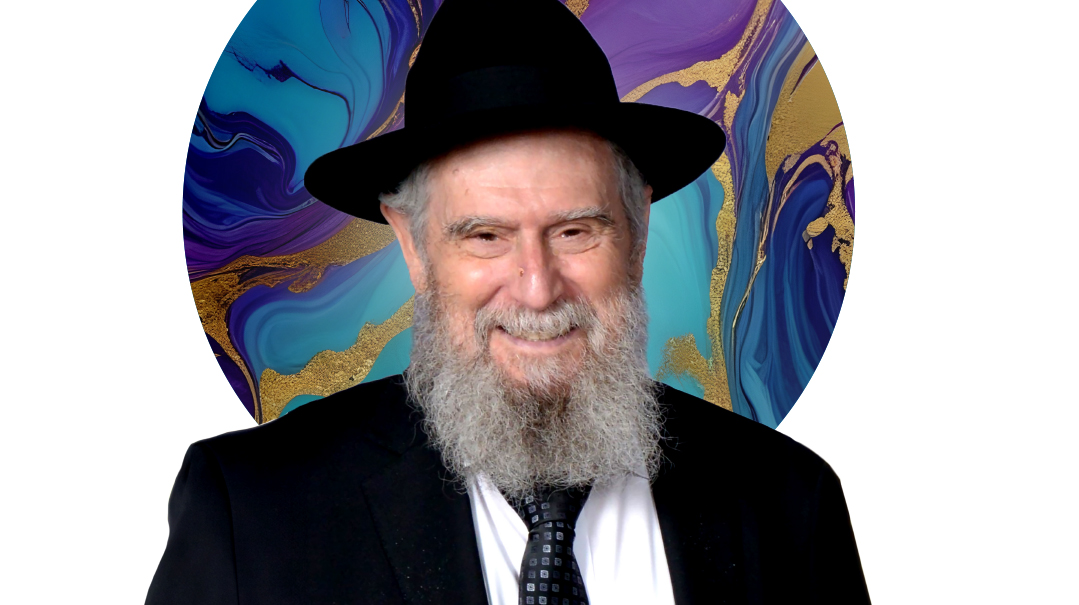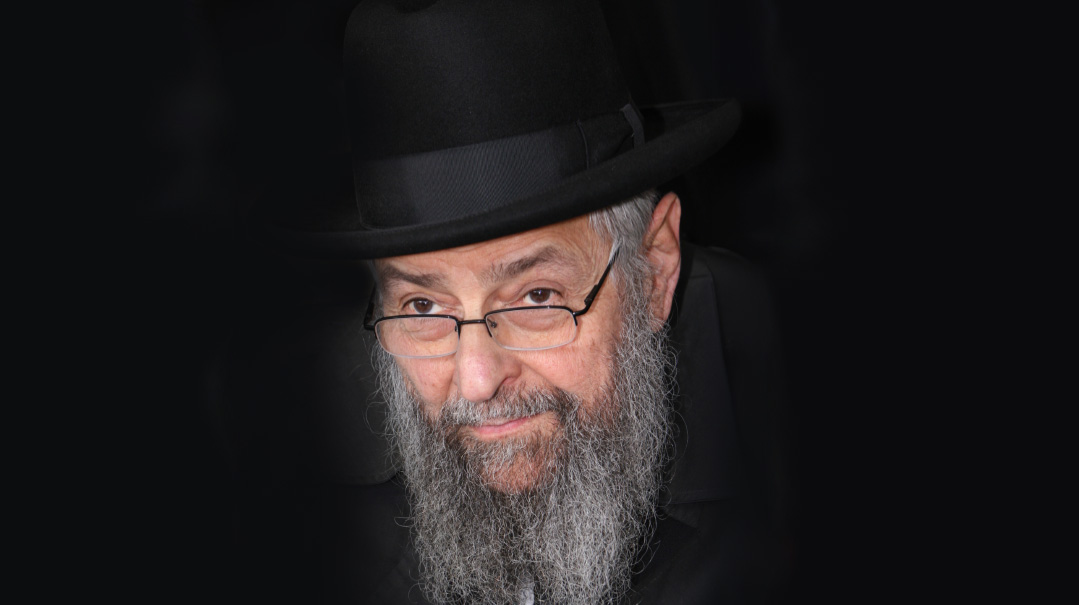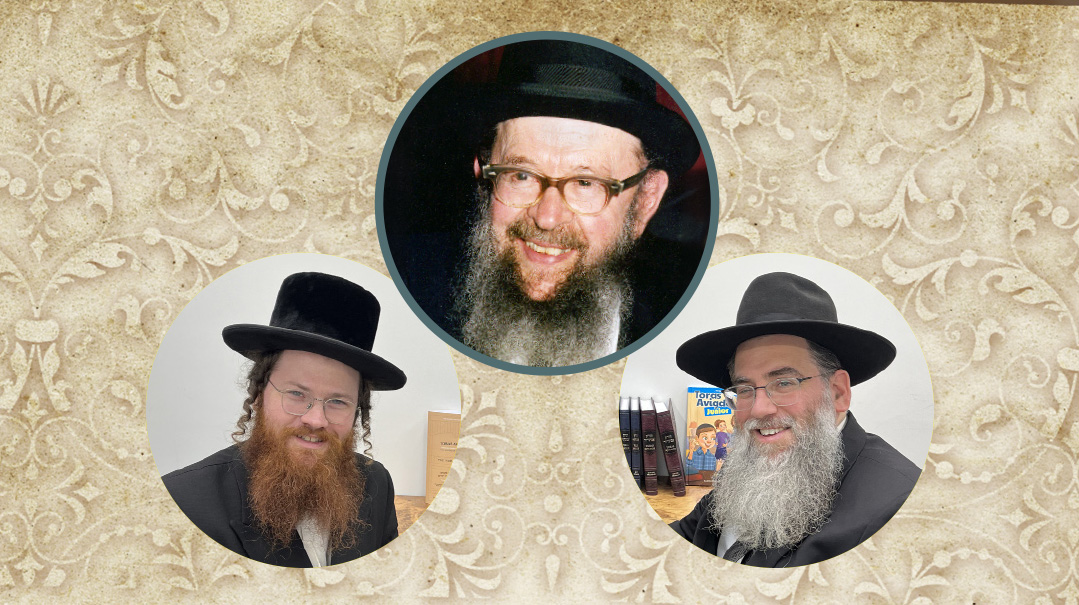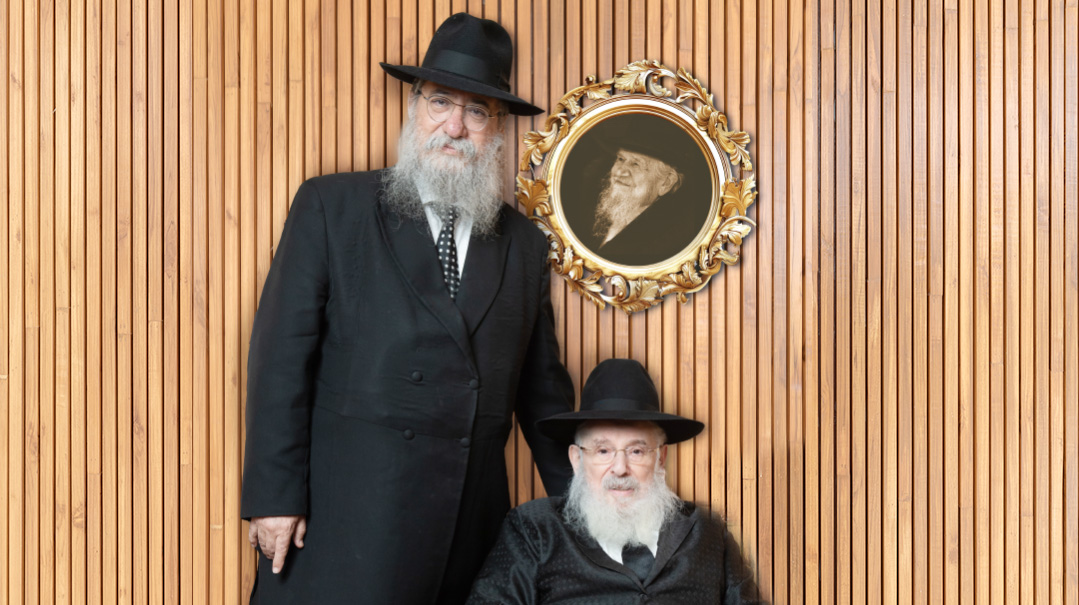Age-Old Questions; Modern-day Solution
| September 21, 2010A gemara regarding the middle letters, words, and verses of the Torah and Tehillim seems simple to understand when studied superficially, but becomes extremely difficult to understand when we closely examine our versions of the Torah and Tehillim.
For centuries, scholars struggled to bridge the large discrepancies. Amazingly, it was a modern-day talmid chacham, once a mathematician in the Soviet Union, who found answers to some of the most baffling questions on this gemara
Even great scholars versed in all areas of Torah occasionally come across a Talmudic sugya (topic) that is difficult to understand. This is most common with aggadic passages, which people will often study once or twice, and then give up, realizing that they haven’t reached a true understanding of the passage.
One passage that has baffled great scholars throughout the ages seems at first glance to be straightforward. In Kiddushin 30a, the Sages record several rules of mesorah, the tradition of how Scripture should read. The Gemara specifies which letter is at the exact midpoint of all the letters in the Torah; which word is at the midpoint of all the words; which verse is at the midpoint of all the verses; and some other information related to the number of words in Torah, Neviim, and Kesuvim.
While we can read this passage without difficulty, when we examine the data closely, it seems that the numbers don’t add up. We know that some details of the mesorah have gotten lost or confused — but that would only account for minor discrepancies in the numbers. The actual discrepancies we face in some of these cases number in the thousands of letters.
It would seem, then, that there must be an alternative explanation for this passage.
The Raw Data
The Gemara states: “The earlier generations were called ‘sofrim’ because they would count [sofer] all the letters in the Torah. They said the letter vav in the verse, ‘all those who go on their gachon [belly]’ (Vayikrah 11:42) marks halfway point of all the letters of the Torah. The words ‘darosh darash [demanded diligently]’ (ibid. 10:16) is the halfway point in terms of words. The verse beginning with ‘Vehisgalach [and he shall shave]’ (ibid. 13:33) is the halfway mark of the verses.
“In Tehillim, in the verse ‘The boar from the forest (mi’ya’ar) gnaws at it’ (80:14), the ayin of ya’ar is the halfway point of letters; and the verse ‘Vehu rachum yechaper avon [But He is merciful, He expiates iniquity]’ (78:38) is the middle verse of Tehillim.”
The Sages of the Gemara proceeded to analyze these facts:
“Rav Yosef asked: Does the vav of gachon belong to the first half or the second [i.e., does it conclude the first half of the Torah or begin the second half]? They [the scholars] said to him: Let a sefer Torah be brought and we will count them! Did not Rabbah bar Bar Chana say: They did not stir from there until a sefer Torah was brought, and they counted them? [In a similar incident, Rabbah bar Bar Chana relates that the Sages resolved a doubt by bringing a sefer Torah and counting the letters.] He [Rav Yosef] said to them: They were thoroughly versed in the chaseiros v’yeseiros, and we are not.”
Rav Yosef asked another question:
“Does vehisgalach belong to the first half or the second [Does the verse beginning with ‘and he shall shave’ belong to the end of the first half of the Torah or the beginning of the second half]? Abaye said to him: For the verses, at least, we can bring [a sefer Torah] and count them! [Rav Yosef answered back:] In the verses too we are not certain. For when Rav Acha bar Adda came, he said: In the West [Eretz Yisrael], the following verse is divided into three: ‘And God said to Moshe, Behold, I come to you in a thick cloud, etc.’ [Thus, Rav Yosef proved that we are not experts in the exact division of the verses either.]”
The Gemara cites one more baraisa:
“Our Rabbis taught: There are five thousand [some have the version: eight thousand], eight hundred eighty-eight [5,888] verses in the Torah; Tehillim exceeds this by eight; while Divrei HaYamim has eight fewer.”
The Questions
Astonishingly, not one piece of information in the Gemara is consistent with what we find in our sifrei Torah and volumes of Tanach.
- The vav of gachon is the 157,237th letter in our sifrei Torah, and the middle letter is the 152,403rd letter — the vav in the verse, “isheh hu l’Hashem” — a fire offering to God (Vayikra 8:28).[1] This represents a discrepancy of nearly five thousand letters!
- The words “darosh darash” are not the middle words in our sifrei Torah; rather, the halfway mark are the words: “el yesod”– at the base of the altar (ibid. 8:15), approximately a thousand words away from darosh darash.
- Rather than “vehisgalach,” the mesorah annotations state that the verse: “And he placed the choshen on him” (Vayikra 8:8) is the actual middle verse of our sifrei Torah.
- The letter ayin in ya’ar is not the halfway point in our sifrei Tehillim. Rashash writes (in his commentary to this gemara) that he counted our sefer Tehillim and found a discrepancy of two thousand letters.
- By our count, the verse halfway through Tehillim is “They beguiled Him with their mouth” (Tehillim 78:36), which is two verses before the one listed in the Gemara.
- We have 5,845 verses in our sifrei Torah, not 5,888 — and certainly a far cry from the version in the Gemara that states that there are 8,888 verses.
- The Gemara says that Tehillim exceeds this verse total by eight, which means that Tehillim should have 5,896 words. But we know that Tehillim has only 2,528 verses. The Tosafos Yeshanim (Kiddushin 30a) remarked that even if every three words in Tehillim were considered a verse, we still would not reach this number.
- The Gemara says that Divrei HaYamim has eight fewer verses than the Torah, which means that there should be 5,880 verses in Divrei HaYamim. But our version of Divrei HaYamim contains only 1,656 verses — a huge discrepancy, by any measure.
- Why does the baraisa only compare the Torah with Tehillim and Divrei HaYamim, and not with other books in Tanach?
Talmidei chachamim have grappled with these questions for hundreds of years, writing solutions to this sugya that could fill an entire bookcase. Almost all of these explanations leave some questions unanswered, or have been refuted by later authorities. Before moving on to some astonishingly accurate solutions offered by someone from our own generation, we will sample a previously suggested solution, and the difficulties that were raised regarding it.
Vav of Gachon, the Middle of the Letters
The simplest way to explain the discrepancy between our sifrei Torah and the Gemara’s account runs through Rav Yosef’s words: “They were well versed in chaseiros v’yeseiros, but we are not.”
Chaseiros and yeseiros are terms used to describe how words are spelled. The word “b’succos,” for instance, is spelled in some places in the Torah with a vav, and in other places without it. The Gemara often expounds the “extra” or “missing” letters in words, even determining halachos based on such inclusions or omissions.
Rav Yosef was saying that over the generations, the tradition of the chaseiros and yeseiros was not transmitted perfectly, and we are therefore no longer able to count the letters of the Torah with exactitude.
But this explanation is very hard to understand, because Rav Yosef himself rules (Menachos 29b) that a sefer Torah that has extensive changes in chaseiros or yeseiros cannot be used. Clearly, he and Abaye were careful to read from proper sifrei Torah. So why did Rav Yosef say: “They were thoroughly versed in chaseiros v’yeseiros, and we are not”? Why not go check the number of letters in his sefer Torah? Is it possible to say that Rav Yosef and Abaye, among the greatest Amoraim, held the view that by their time the tradition was already considered inaccurate, and so they read from unfit sifrei Torah?
In addition, we know how careful the Sages were in transmitting each detail of the mesorah. Only a hundred fifty years before this discussion took place, we find the words of the great Tanna Rabbi Meir — who was also a scribe — showing how precise they were in matters pertaining to the mesorah (Eruvin 13a, Sotah 20a):
“When I came to Rabbi Yishmael, he said to me, ‘My son, what is your occupation?’ I told him, ‘I am a scribe.’ And he said to me, ‘Be meticulous in your work, for your occupation is a sacred one; should you perhaps omit or add one single letter, you could thereby destroy the entire universe.’$$$SEPARATE QUOTES$$$” The Gemara adds that Rabbi Meir was an expert scribe in these aspects (Sotah ibid.): “Needless to say, I am proficient in chaseiros and yeseiros.”
Piskei Eliyahu raises another difficulty. Even if the Amoraim were not proficient in chaseiros and yeseiros, in order to place the vav of gachon in the middle, we would have to assume that all the mistakes in adding extra letters were made in the second half of the Torah, and all the missing letters were dropped from the first half of the Torah.
“Why did the second half of the Torah gain extra letters at the expense of the first half?” he wonders.
He notes that even the disputes between the Sages in Bavel and those in Eretz Yisrael were over minute differences, not approaching the scope that we are dealing with here.
Furthermore, the Minchas Chimuch states that concerning a practical difference in halachah the Amoraim were proficient in chaseiros and yeseiros.
This answer to the question is representative of many other attempted solutions. While it does answer the question partially, it is difficult to reconcile with the scope of the discrepancies.
Middle of the “Letters”
Rabbi Yitzchak Zilber was known as “the father of the Russian Jews.” He emerged from Soviet Russia, where he was a mathematician, as a great talmid chacham, having memorized large portions of the Torah.
In one of his Torah lectures he related that when he studied this sugya with his son Rabbi Ben Tzion, they conjectured that perhaps the Gemara intends to say that the vav of gachon is the middle letter of the unusual (either large or small) letters of the Torah, and not the middle of all the Torah’s letters. Further investigation revealed that there are two reckonings of how many letters should be large or small: In our sifrei Torah, there are sixteen large or small letters, and according to Rabbeinu Yosef Tov Elem (cited in the Machzor Vitri II, p. 673), there are thirty-two unusual letters.
Amazingly, according to both opinions, the vav of gachon is the middle letter, with eight on one side and eight on the other side according to the first view, or sixteen on one side and sixteen on the other side according to the second opinion.
These are the sixteen places in which large or small letters appear in our sifrei Torah:
- Bereishis (Bereishis 1:1) — large beis
- B’hibaram (ibid. 2:4) — small hey
- U’levachtah (ibid. 23:2) — small kaf
- Katzti b’chayai (ibid. 27:46) — small kuf
- Notzer chesed (Shemos 34:7) — large nun
- Acher (ibid. 34:14) — large reish
- Vayikra (Vayikra 1:1) — small alef
- Mukdah (ibid. 6:2) — small mem
- Gachon (ibid. 11:42) — large vav
- Vehisgalach (ibid.13:33) — large gimmel
- Yigdal (Bamidbar 14:17) — large yud
- Shema (Devarim 6:4) — large ayin
- Echad (ibid. 6:4) — large dalet
- Veyeshlechem (ibid. 29:27) — large lamed
- Ha’l’Hashem (ibid. 32:6) — large hey
- Teshi (ibid. 32:18) — small yud
If we view the sixteen unusual letters as two sets of eight, the letter vav of gachon is the first unusual letter in the second set of eight – or, in other words, the first unusual letter in the “second half” of the Torah.
According to RavYosef Tov Elem there are thirty-two unusual letters.[2] If we were to view his list as two groups of sixteen, the vav of gachon would be the sixteenth, which makes it the last letter in the “first half” of the Torah.
Rabbi Zilber suggests that when asking, “Is the vav of gachon the last of the first half or the first of the second half?” Rav Yosef meant to ask which mesorah regarding the large and small letters is correct – the on that has sixteen, which places the vav of gachon in the second half, or the one that has thirty-two and places it in the first half?
The Gemara answers that “we are not experts” to determine this matter.
The Middle Pair
Now let us turn to the Gemara’s statement that dorosh darash is the middle of the Torah in terms of words, which, we have seen, is not so in our sifrei Torah.
A novel answer, similar to Rav Yitzchak Silber’s answer to the previous question, appears in Ahavas Torah, by Rabbi Pinchas Zalman Segal Ish Hurwitz. He suggests that the Gemara refers to the midpoint of words that appear twice in succession, such as “Avraham Avraham,” and so on. When all these words in pairs are counted, we see that dorash darash is exactly in the middle. He cautions not to include in the count those pairs of words that come from different roots, such as: “Lech lecha” — Go for yourself from your land (Bereishis 12:1); and “Sham sam ”— there He gave them a statue and a law (Shemos 15:25). (Words with the same root, but different structure, such as haremes haromes are counted.)
Indeed, Rabbi Yitzchak Zilber counted all the pairs of words in the Torah, and found that there were eighty-nine such cases. In the accompanying list, we can see that darosh darash is indeed number forty-five, exactly in the middle. Appropriately, in this case, the Gemara does not ask whether the middle pair of words belongs to the first half or the second half — because it is exactly in the middle, with forty-four before it, and forty-four after it!
- הרמש הרמש (בראשית א’, כ”ו)
- זרע זרע (בראשית א’, כ”ט)
- זרע זרע (בראשית א’, כ”ט)
- נח נח (בראשית ו’, ט’)
- שבעה שבעה (בראשית ז’, ב’)
- שבעה שבעה (בראשית ז’, ג’)
- שנים שנים (בראשית ז’, ט’)
- הרמש הרמש (בראשית ז’, י”ד)
- שנים שנים (בראשית ז’, ט”ו)
- מאד מאד (בראשית ז’, י”ט)
- השרץ השרץ (בראשית ז’, כ”א)
- הרמש הרמש (בראשית ח’, י”ז)
- שם שם (בראשית י”א, י’)
- תרח תרח (בראשית י”א, כ”ז)
- בארת בארת (בראשית י”ד, י’)
- עצר עצר (בראשית כ’, י”ח)
- אברהם אברהם (בראשית כ”ב, י”א)
- אברהם אברהם (בראשית כ”ה, י”ט)
- האדם האדם (בראשית כ”ה, ל’)
- יצא יצא (בראשית כ”ז, ל’)
- מאד מאד (בראשית ל’, מ”ג)
- עדר עדר (בראשית ל”ב, י”ז)
- מלך מלך (בראשית לו, ל”א)
- טרף טרף (בראשית ל”ז, ל”ג)
- יום יום (בראשית ל”ט, י’)
- העד העד (בראשית מ”ג, ג’)
- שכלתי שכלתי (בראשית מ”ג, י”ד)
- טרף טרף (בראשית מ”ד, כ”ח)
- יעקב יעקב (בראשית מ”ו, ב’)
- דלה דלה (שמות ב’, י”ט)
- משה משה (שמות ג’, ד)
- כה כה (שמות ז’, ט”ז-י”ז)
- חמרים חמרים (שמות ח’, י’)
- גאה גאה (שמות ט”ו, א’)
- גאה גאה (שמות ט”ו, כ”א)
- יום יום (שמות ט”ז, ה’)
- בבקר בבקר (שמות ט”ז, כ”א)
- מעט מעט (שמות כ”ג, ל’)
- בבקר בבקר (שמות ל’, ז’)
- ד’ ד’ (שמות ל”ד, ו’)
- בבקר בבקר (שמות ל”ו, ג’)
- איש איש (שמות ל”ו, ד’)
- אשם אשם (ויקרא ה’, י”ט)
- בבקר בבקר (ויקרא ו’, ה’)
- דרש דרש (ויקרא י’, ט”ז)
- השרץ השרץ (ויקרא י”א, מ”א)
- השרץ השרץ (ויקרא י”א, מ”ב)
- השרץ השרץ (ויקרא י”א, מ”ג)
- בהרות בהרות (ויקרא י”ג, ל”ח)
- איש איש (ויקרא ט”ו, ב’)
- איש איש (ויקרא י”ז, ג’)
- איש איש (ויקרא י”ז, ח’)
- הגר הגר (ויקרא י”ז, י’)
- הגר הגר (ויקרא י”ז, י”ג)
- איש איש (ויקרא י”ח, ו’)
- הגר הגר (ויקרא י”ט, ל”ד)
- איש איש (ויקרא כ’, ב’)
- הגר הגר (ויקרא כ’, ב’)
- איש איש (ויקרא כ’, ט’)
- איש איש (ויקרא כ”ב, ד’)
- (איש איש (ויקרא כ”ב, י”ח)
- איש איש (ויקרא כ”ד, ט”ו)
- איש איש (במדבר א’, ד’)
- איש איש (במדבר א’, מ”ד)
- נתונם נתונם (במדבר ג’, ט’)
- חמשת חמשת (במדבר ג’, מ”ז)
- איש איש (במדבר ד’, י”ט)
- איש איש (במדבר ד’, מ”ט)
- איש איש (במדבר ה’, י”ב)
- אמן אמן (במדבר ה’, כ”ב)
- עשרה עשרה (במדבר ז’, פ”ו)
- נתנים נתנים (במדבר ח’, ט”ז)
- איש איש (במדבר ט’, י’)
- ירק ירק (במדבר י”ב, י”ד)
- מאד מאד (במדבר י”ד, ז’)
- יום יום (במדבר י”ד, ל”ד)
- מטה מטה (במדבר י”ז, י”ז)
- הקרב הקרב (במדבר י”ז, כ”ח)
- עשרון עשרון (במדבר כ”ח, כ”א)
- עשרון עשרון (במדבר כ”ח, כ”ט)
- עשרון עשרון (במדבר כ”ט, י’)
- יצא יצא (במדבר ל”ה, כ”ו)
- בדרך בדרך (דברים ב’, כ”ז)
- מעט מעט (דברים ז’, כ”ב)
- שנה שנה (י”ד, כ”ב)
- צדק צדק (דברים ט”ז, כ’)
- מעלה מעלה (דברים כ”ח, מ”ג)
- מטה מטה (דברים כ”ח, מ”ג)
- אני אני (דברים ל”ב, ל”ט)
Different Systems, Different Middle Verses
The Gemara considers the verse “Vehisgalach” — and he shall shave (Vayikrah 13:33) to be the middle verse of the Torah. However, as we have seen, the mesorah indicates that the Torah’s middle verse is: “And he placed upon him the choshen” (ibid. 8:8).
We can suggest a solution to this problem based on a closer examination of the discussion in the Gemara. Abaye offers to count the number of verses in the Torah in order to know whether Vehisgalach is from the first half or the second, but Rav Yosef rejects the notion, because he contends — as he did in regard to the number of letters — that we are not proficient enough to make the determination. He cites proof from a Sage who came from Eretz Yisrael to Bavel, and revealed that a verse that the Jews in Bavel read as one verse was split into three in Eretz Yisrael.
But it is impossible to say that Rav Yosef was not proficient in the exact division of the verses, for he himself rules (Megillah 22a) that we may not stop in the middle of reading a verse, because, “we do not make any division not made by Moshe.” Clearly, he did have a tradition as to how the verses were divided by Moshe Rabbeinu.
Perhaps we can say that Rav Yosef explained that since this baraisa was taught in Eretz Yisrael, where there was a different tradition as to the division of the verses, the sages in Bavel were not proficient enough in the system of division in Eretz Yisrael to determine whether this verse is from this half or that.
By the same token, we can suggest that in counting Vehisgalach as the middle verse of the Torah, the baraisa was using the Eretz Yisrael system of dividing the psukim, whereas the mesorah uses the system in place in Bavel, which we still use today.
The Ayin of M’Ya’ar
In regard to the ayin of m’ya’ar being the middle letter of Tehillim, Rav Yitzchak Zilber once again applied the assumption that the Gemara might be referring to unusual letters. Sure enough, he found that here, too, there are two methods of counting the number of unusual letters.
Our method (seven letters):
- Lshav (Tehillim 24:4) — the vav is small or cut-off
- Ha’l’olamim (77:8) — large hey
- Zarmu (77:18) — small zayin
- M’ya’ar (80:14) — hanging ayin (like superscript)
- Vachena (80:16) — large kaf
- Ken (84:4) — large kuf
- Himru (107:11) — small hey
Rabbi Yosef Tov Elem’s method (six letters):
- Al ken (18:50) — large ayin
- Venafsho (22:30) — small vav
- Ha’l’olamim (77:8) — large hey
- M’ya’ar (80:14) —hanging ayin (like superscript)
- Vachena (80:16) — large kaf
- Ken (84:4) — large kuf
Amazingly, although the lists are quite different, the ayin of m’ya’ar is at the halfway point of both lists.
But why would the Sages pay such close attention to the unusual letters in the Torah?
Rabbi Zilber suggests that they used these indications to avoid erring in the mesorah of the unusual letters and words, but not to keep track of the total number of words, letters, or verses in the Torah or Tehillim, as one assumes when first studying this sugya.
The “Middle” Verse of Tehillim
The Gemara states that the verse, “Vehu rachum yechaper avon” (Tehillim 78:38) is the middle verse in Tehillim.
As we have seen, the discrepancy in this case is just two verses, so we can suggest that there were versions in which a verse or two were split differently.
But Rabbi Zilber offers another novel explanation. The actual middle verse is: “They beguiled Him with their mouth, and with their tongue they lied to Him” (ibid. 78:36). When making the demarcation, the Gemara did not want to use a verse that is derogatory to Klal Yisrael. Therefore, both this verse and the next, “Their heart was not sincere with Him; they were not faithful in His covenant,” were not listed, and the verse immediately thereafter was used instead.
The “Missing” Verses
Now we have reached the last words of the baraisa, which are the most puzzling of all: “Our Rabbis taught: There are five thousand eight hundred eighty-eight (5,888) verses in the Torah; Tehillim exceeds this by eight, and Divrei Hayamim has eight fewer.”
We raised four questions on this baraisa:
- According to the way we divide the verses in the Torah, there are 5,845 verses, or forty-three less than the 5,888 listed in the Gemara.
- The Gemara says that Tehillim exceeds this by eight, which means that Tehillim should be 5,896 words. But we know our sifrei Tehillim have only 2,528 verses.
- According to this gemara, there should be 5,880 verses in Divrei HaYamim, but our Divrei HaYamim has only 1,656 verses.
- Why does the baraisa compare the Torah only to Tehillim and Divrei HaYamim, and not with other books in Tanach?
We find a most extraordinary and original explanation for this section in Kinamon Bosem on the Ein Yaakov by Rabbi Yehuda Idel HaLevi Epstein, a disciple of Rabbi Chaim of Volozhin, who writes that he saw this wonderful commentary in an old sefer called Keser Torah.
He suggests that the Sages had a tradition that there were 5,888 verses in the Torah, but when they counted they found only 5,845 verses, as we do. They too wondered what had happened to the additional forty-three verses.
If we examine the books of Tehillim and Divrei HaYamim, we find there are forty-three verses of the Torah that also appear literally, word for word, in these books — such as, “Hashem is my strength and my song, he is become my salvation,” which appears in Shemos (15:2) and Tehillim (118:14).
If so, we can explain the Gemara as follows: The are 5,888 Torah verses — i.e., verses that contain words that appear in the Torah. Forty-three of these verses are found repeated in Kesuvim, eight of them are in Tehillim and thirty-five in Divrei HaYamim.
The baraisa’s author wanted the numbers to be remembered easily, so he used the numeral eight consistently. Therefore, rather than saying that thirty-five of the Torah’s verses are repeated in Divrei HaYamim, he said, “Divrei HaYamim is less by eight,” meaning eight fewer than the total of forty-three missing verses.
According to this explanation, we can understand why the baraisa does not say, “5,888 verses are written in the Torah,” but rather, “5,888 are the verses of the Torah.” This is because while not all of the verses are written in the Torah, all of them are still “verses of the Torah” — but some are written in again in Tehillim, and some are repeated in Divrei HaYamim.[3]
Finally, we can also now understand why the baraisa does not compare the Torah to other books of the Tanach: because its author focused only on verses of the Torah that also appear elsewhere — and those repetitions are found only in Tehillim and Divrei HaYamim.
As we complete the Torah and begin it once again on Simchas Torah, we can approach it with a renewed appreciation for the hidden depth of each word in the Torah, and rejoice in the sheer brilliance of the explanations to this sugya that were revealed just recently, in our times.
[1] Mishnas Rabbi Yaakov on the Tosefta (4:3) from Rabbi Yaakov Schorr.
[2] We have omitted the full list for the sake of brevity. See Machzor Vitri cited above for the list.
[3] Not all the verses appear in their entirety in Tehillim or Divrei HaYamim — some contain only three words from the Torah ending with an asnachta — but those, too, are considered full psukim.
(Originally featured in Kolmus, Issue 13)
Oops! We could not locate your form.

